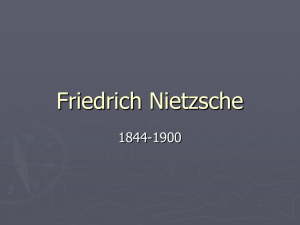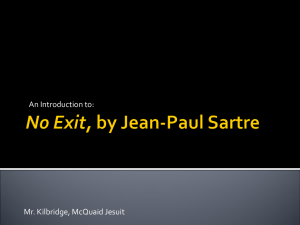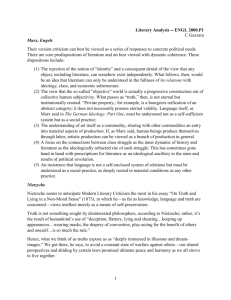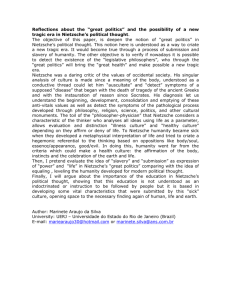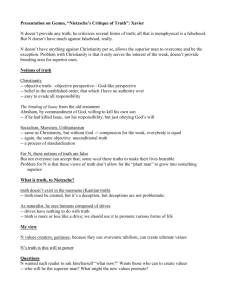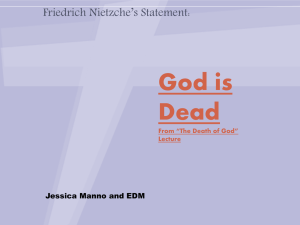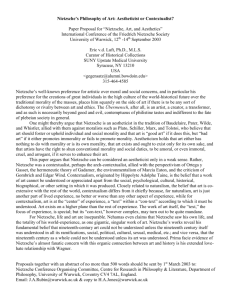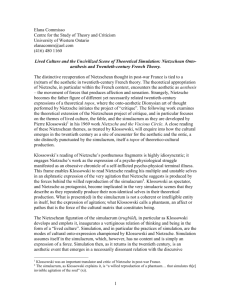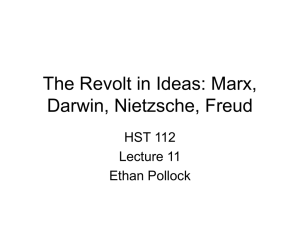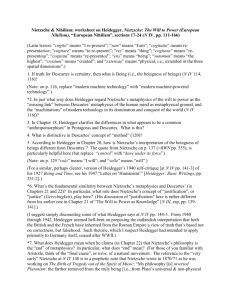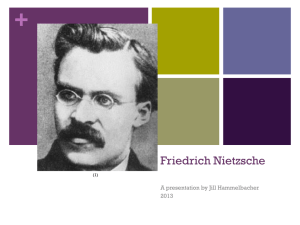Miller
advertisement
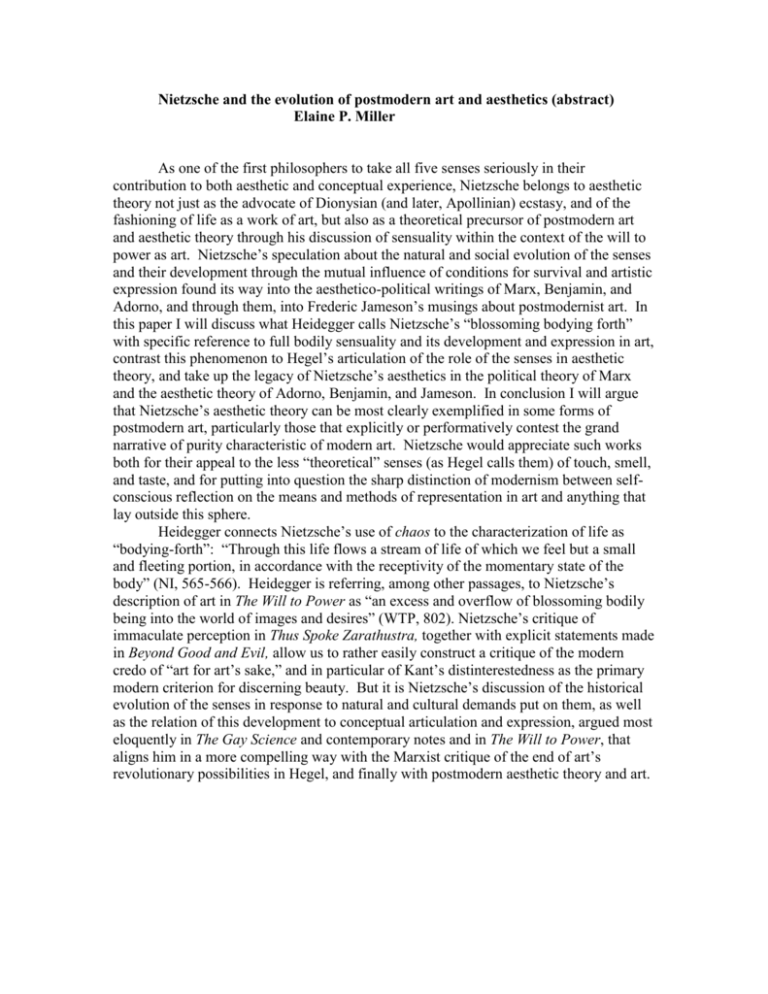
Nietzsche and the evolution of postmodern art and aesthetics (abstract) Elaine P. Miller As one of the first philosophers to take all five senses seriously in their contribution to both aesthetic and conceptual experience, Nietzsche belongs to aesthetic theory not just as the advocate of Dionysian (and later, Apollinian) ecstasy, and of the fashioning of life as a work of art, but also as a theoretical precursor of postmodern art and aesthetic theory through his discussion of sensuality within the context of the will to power as art. Nietzsche’s speculation about the natural and social evolution of the senses and their development through the mutual influence of conditions for survival and artistic expression found its way into the aesthetico-political writings of Marx, Benjamin, and Adorno, and through them, into Frederic Jameson’s musings about postmodernist art. In this paper I will discuss what Heidegger calls Nietzsche’s “blossoming bodying forth” with specific reference to full bodily sensuality and its development and expression in art, contrast this phenomenon to Hegel’s articulation of the role of the senses in aesthetic theory, and take up the legacy of Nietzsche’s aesthetics in the political theory of Marx and the aesthetic theory of Adorno, Benjamin, and Jameson. In conclusion I will argue that Nietzsche’s aesthetic theory can be most clearly exemplified in some forms of postmodern art, particularly those that explicitly or performatively contest the grand narrative of purity characteristic of modern art. Nietzsche would appreciate such works both for their appeal to the less “theoretical” senses (as Hegel calls them) of touch, smell, and taste, and for putting into question the sharp distinction of modernism between selfconscious reflection on the means and methods of representation in art and anything that lay outside this sphere. Heidegger connects Nietzsche’s use of chaos to the characterization of life as “bodying-forth”: “Through this life flows a stream of life of which we feel but a small and fleeting portion, in accordance with the receptivity of the momentary state of the body” (NI, 565-566). Heidegger is referring, among other passages, to Nietzsche’s description of art in The Will to Power as “an excess and overflow of blossoming bodily being into the world of images and desires” (WTP, 802). Nietzsche’s critique of immaculate perception in Thus Spoke Zarathustra, together with explicit statements made in Beyond Good and Evil, allow us to rather easily construct a critique of the modern credo of “art for art’s sake,” and in particular of Kant’s distinterestedness as the primary modern criterion for discerning beauty. But it is Nietzsche’s discussion of the historical evolution of the senses in response to natural and cultural demands put on them, as well as the relation of this development to conceptual articulation and expression, argued most eloquently in The Gay Science and contemporary notes and in The Will to Power, that aligns him in a more compelling way with the Marxist critique of the end of art’s revolutionary possibilities in Hegel, and finally with postmodern aesthetic theory and art.
